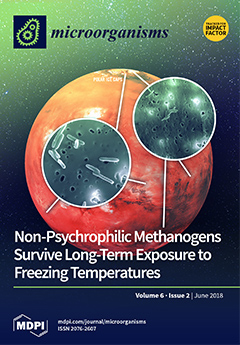There is great geographical variation in the frequency of
Escherichia coli O157 infections that correlates with important differences in the bovine reservoir of each country. Our group carried out a broad molecular characterization of human and bovine
E. coli O157 strains circulating in
[...] Read more.
There is great geographical variation in the frequency of
Escherichia coli O157 infections that correlates with important differences in the bovine reservoir of each country. Our group carried out a broad molecular characterization of human and bovine
E. coli O157 strains circulating in Argentina using different methodologies. Our data allows us to conclude that in Argentina, a high homogeneity is observed in both cattle and human strains, with almost exclusive circulation of strains belonging to the hypervirulent clade 8 described by Manning. The aim of this review was to compare the genetic background of
E. coli O157 strains isolated in countries that have conducted similar studies, to try to correlate specific O157 genotypes with the incidence and severity of
E. coli O157 associated diseases. The characteristics of the strains that cause disease in humans reflect the predominant genotypes in cattle in each of the countries analyzed. The main features clearly linked to high incidence or severity of
E. coli O157 infections are lineage-specific polymorphism assay-6 lineage I/II, clade 8 strains and probably, clade 6 strains, the
stx2a/
stx2c genotype, the presence of
q933 and
q21 simultaneously, and putative virulence factor EC_3286. In countries with an absence of these features in O157 strains, the overall incidence of O157 disease is low. Argentina, where these characteristics are detected in most strains, shows the highest incidence of hemolytic uremic syndrome (HUS) worldwide.
Full article






